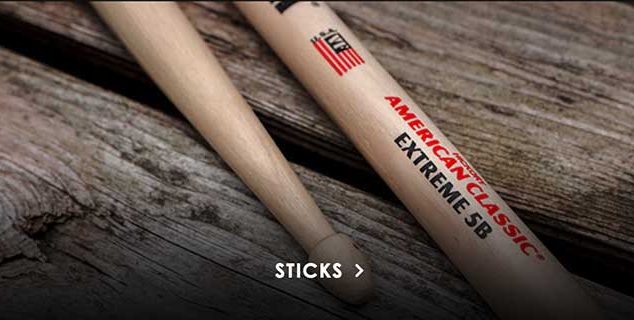CONCERT BASS DRUM

This series of videos will cover all of the fundamentals for concert bass drum maintenance, tuning, stick and implement selection and playing techniques.
To get the most out of the content available, we recommend that you download and print a copy of the Percussion 101 Snare Drum Study Guide and fill out the questions as you watch the videos. The questions in the study guide are listed in the order of the content presented in the videos.
After watching the videos and filling out the study guide, you’re ready to test your knowledge by taking our online quiz. The questions and answers on the test randomized and may have slightly different language than the study guide, so we recommend reviewing the material BEFORE attempting the quiz!
Ready to get started?
Download the Percussion 101: Concert Bass Drum Study Guide
AFTER YOU'VE WATCHED THE VIDEO, SEE IF YOU CAN ANSWER THESE QUESTIONS:
1. What is a typical size for a good concert bass drum?
2. Is a marching bass drum a good substitute for a concert bass drum? Why or why not?
3. Name the regular maintenance routines that should be performed on a concert bass drum.
AFTER YOU'VE WATCHED THE VIDEO, SEE IF YOU CAN ANSWER THESE QUESTIONS:
1. When changing a concert bass drum head, what are some maintenance routines that you can do?
2. What type of head should be AVOIDED on a concert bass drum?
3. When mounting a head on a concert bass drum, which side of the counter hoop should be set against the head?
4. After the head, hoop and tension rods are back on the drum, what is the first step necessary to properly tune the bass drum BEFORE beginning the tuning process?
5. Which head on a concert bass drum should be tuned LOWER – the batter or resonant head?
6. Which head on a concert bass drum should be tuned lower – the batter or resonant head?
7. How can you tell if you‘ve tuned the resonant head too high or too low?
8. What are the characteristics of a good concert bass drum sound?
AFTER YOU'VE WATCHED THE VIDEO, SEE IF YOU CAN ANSWER THESE QUESTIONS:
1. What is the PROPER playing position for a performer on the concert bass drum?
2. What type of mallets should you use for most general concert bass drum passages?
3. What is the best general beating area on the concert bass drum?
4. Which of these is NOT a good option for muffling a concert bass drum?
5. If your bass drum stand does not have a foot rest, what’s the best way to position your leg to muffle the drum?
6. For articulate notes (such as in typical marches), how should you muffle the drum?
7. What is the best position to place your mallets on the drumhead for bass drum rolls?
8. What type of roll should you use on a concert bass drum?
ESSENTIAL BASS DRUM MALLETS FOR THE CONCERT PERCUSSIONIST
TAKE THE ONLINE QUIZ TO TEST YOUR KNOWLEDGE!
PLAYER FAVORITES:
TEACHERS:
Vic Firth’s Percussion 101 and online tests are a great resource to implement in YOUR curriculum. Please take a moment to read the FAQ to find out more!
The PERCUSSION 101 project is a series of video lessons that provide students and instructors alike with a comprehensive introduction to the fundamental techniques for the most common percussion instruments.
The curriculum for this series was compiled by members of Vic Firth’s Collegiate Educator Program which includes some of the most influential university instructors in the country. The series covers instrument characteristics, maintenance routines, tuning, mallet selection and general playing techniques on the instruments. In addition, rehearsal techniques & exercises will help you to develop a great fundamental percussion program.
This project was originally developed for use in the college percussion methods class – to serve as instruction for non-percussionists who will be charged with teaching percussion in the schools. It quickly developed into a resource to find quick answers to common questions after these students went in the field.
After we began to see what a truly valuable resource this was, we began to integrate study guides and online tests so that percussion students could also take advantage of the information. After all, how much time do you REALLY have in your classroom or private lesson studio to cover all of the percussion instruments fully? Generally, we fix the problems with gaps in knowledge as they occur instead of proactively covering all of our basics!
Whether you are a college percussion methods instructor, a band or orchestra director or a private percussion lesson teacher, we’ve made this resource a valuable “HANDS-OFF” teaching resource! The information for all of the instruments is presented in a series of videos which cover all the fundamentals, so student can watch on their own. Here are some recommendations for implementing this in your curriculum:
AS HOMEWORK ASSIGNMENT OR CLASSROOM ACTIVITY: On each instrument “module”, there is a STUDY GUIDE that students can download. This study guide will keep them on-task by asking simple questions on information that was included in the video (in sequential order). Simply assign an instrument to the student (giving him or her the appropriate link on our website), hand them a printed study guide, then collect the study guide as proof that they watched the videos!
AS A TEST: We have constructed a TEST based on the Study Guide (with the questions mixed up and slightly altered). Obviously would like to avoid letting students download the test itself. Send us a note and we’ll be happy to email you a PDF copy that you can print and use in your classroom (to keep students from requesting the test, please email us from a school or ISD email account).




